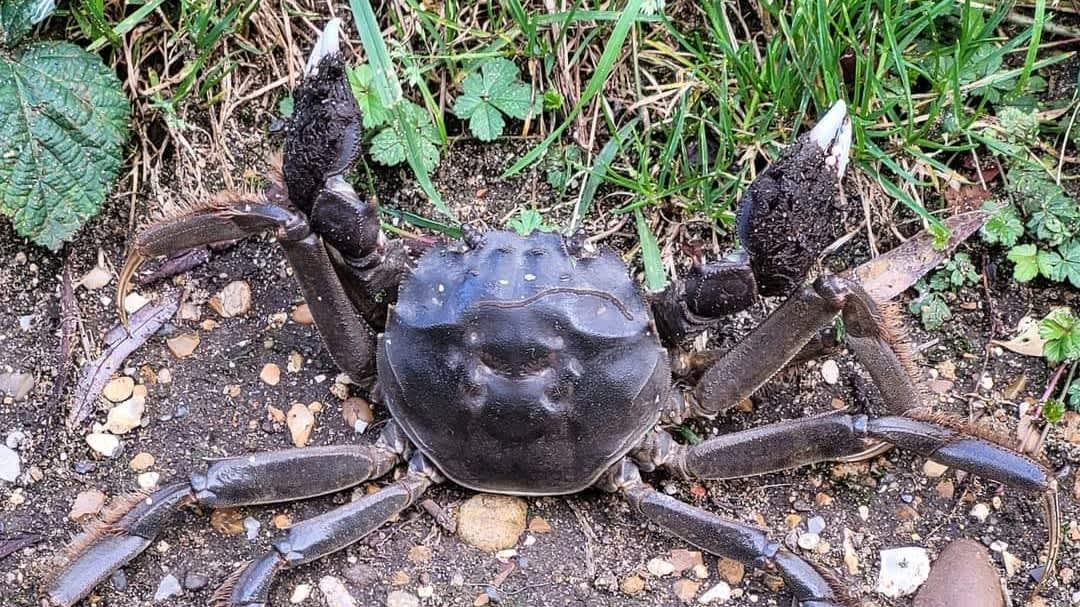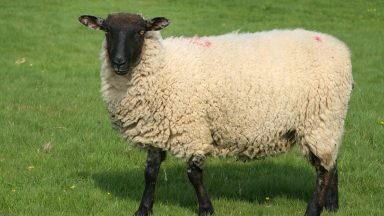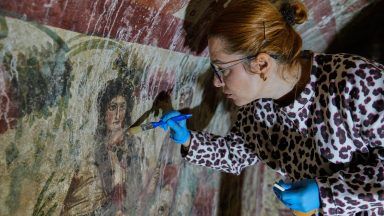An invasive species of crab that can grow to the size of a dinner plate has been spotted in Cambridgeshire amid calls for the public to report any sightings.
The Chinese mitten crab has been spotted several times in the past few weeks in the waterways and parks of Cambridgeshire around Peterborough.
They prefer to live on river banks and around estuaries but can quickly push out native species from their habitats.
The managers of the Nene Park Trust, which manages the Ferry Meadows Park in Peterborough where the crabs were seen confirmed, said they had several reports of crab sightings in recent weeks.
A pair of mitten crabs spotted near Yaxley
A spokesperson said: “Unfortunately there is very little we can do about them as they are naturally spreading through our waterways and water courses.
“These recent sightings have been reported to the relevant authorities.
“They don’t pose any threat to people or dogs but would probably give a nasty nip with their pincers if anything gets too close, so we would advise visitors to keep their distance.”
Facebook groups dedicated to fishing and walking in the area have had several posts reporting numerous sightings.
The crabs gained their name due to the fur that grows around their claws.
Invasive species
According to the Department for Environment Food and Rural Affairs (Defra) the Chinese mitten crab was first detected in the UK in 1935 in the River Thames near Chelsea.
It is believed to have travelled on trade vessels coming from China.
The species is now considered established in the Thames as well as along several other key waterways in the UK including the Tyne, Humber, Medway, Wharfe, Ouse, Tamar, and Dee.
Defra encouraged anyone to report any sightings and warned they are legal to be sold live for human consumption.
Members of the public have been encouraged to report sightings
In 2014 the International Union for Conservation of Nature listed the crab as one of the world’s 100 worst invasive species.
The crabs can have a major impact on the erosion of river banks as their burrowing can cause instability.
They can be a nuisance for commercial and recreational fishing by clipping through nets, eating caught fish and hunting in fishing grounds.
They have an extraordinarily high reproduction rate and are highly resilient making tackling them very difficult.
The Natural History Museum runs a ‘mitten crab watch’ where members of the public can report sightings.
Follow STV News on WhatsApp
Scan the QR code on your mobile device for all the latest news from around the country





























